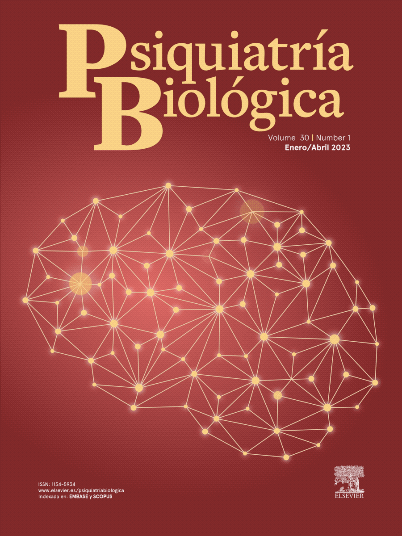la tasa de no adherencia al tratamiento en la esquizofrenia se sitúa entre el 40 y 50%. La escasa consistencia en las variables identificadas asociadas a la no adherencia puede deberse a una heterogeneidad real entre los pacientes no adherentes.
Objetivosevaluar la prevalencia de la no adherencia en pacientes con esquizofrenia o trastorno esquizoafectivo. Evaluar los posibles subtipos de no adherencia según la intencionalidad.
Metodologíase incluyeron 110 pacientes ingresados consecutivamente con diagnóstico de esquizofrenia o trastorno esquizoafectivo. Fueron evaluados durante el ingreso y a los 6 meses del alta hospitalaria. Se incluyeron variables sociodemográficas, clínicas, psicopatológicas y relacionadas con el tratamiento. La adherencia se definió como la concurrencia de adherencia al tratamiento antipsicótico y al seguimiento. Se estableció el subtipo de no adherencia según el motivo principal de no adherencia.
Resultadosno se halló adherencia en el 58,2% de los pacientes. El nivel socioeconómico bajo, el consumo de cannabis, la no adherencia como motivo de recaída e ingreso y la gravedad de los síntomas, se asociaron de manera independiente a la no adherencia. El nivel educativo bajo, el peor conocimiento del tratamiento a los 6 meses y el uso de tratamiento no psiquiátrico a los 6 meses se asociaron de manera independiente al subtipo de no adherencia no intencional.
Conclusionesun alto porcentaje de los pacientes con esquizofrenia y trastorno esquizoafectivo no muestra adherencia tras el alta hospitalaria. Parecen existir subtipos de no adherencia según la intencionalidad, lo que sugiere la necesidad de un abordaje diferenciado.
The rate of non-adherence to treatment in schizophrenia is between 40 and 50%. The scarcity of consistently identified variables associated with nonadherence could be due to real heterogeneity among nonadherent patients.
ObjectivesEvaluate the prevalence of non-adherence in patients with schizophrenia or schizoaffective disorder. Evaluate the possible subtypes of non-adherence according to intentionality.
Methodology110 consecutively admitted patients diagnosed with schizophrenia and schizoaffective disorder were included. They were evaluated during admission and six months after hospital discharge. Sociodemographic, clinical, psychopathological, and treatment-related variables were included. Adherence was defined as the concurrence of adherence to antipsychotic treatment and follow-up. The subtype of non-adherence was established according to the main reason for non-adherence.
ResultsNon-adherence was found in 58.2% of the patients. Low socioeconomic status, cannabis use, nonadherence as a reason for relapse and admission, and severity of symptoms were independently associated with nonadherence. Low educational level, poorer treatment knowledge at six months, and use of non-psychiatric treatment at six months were independently associated with the subtype of unintentional non-adherence.
ConclusionsA high percentage of patients with schizophrenia and schizoaffective disorder do not show adherence after hospital discharge. There seem to be subtypes of non-adherence according to the intention, which suggests the need for a differentiated approach.






